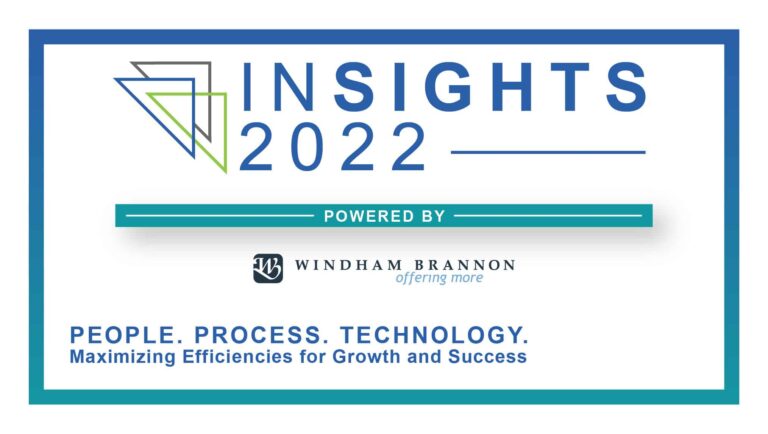The Big Picture
Data analytics is a subset of the broader topic of data science, centered on building, cleaning, and organizing datasets. Data scientists create and leverage algorithms, statistical models, and their custom analyses to collect and shape raw data into something more easily understood. Data analytics is the science of examining raw data products of data science to answer questions, extract insights and identify trends. The following depicts the data analytics process.
Data analytics uses the data curated by the data science group to uncover powerful insights, help organizations manage costs, increase efficiency and improve risk management. Without data analytics, staff spend hours on manual processes and analysis to reach their financial and operational goals – but in a world dominated by automation and leveraged technology, this is not competitive. Embracing data analytics is an important part of future-proofing a business.
Before any analytics can be performed, the data must be assessed, acquired and prepared.
Data Assessment
The assessment begins with identifying the data necessary to accomplish a business objective with well-defined goals. Then determining the quality of your data to ensure it is accurate, complete, reliable, relevant, and timely, all as it relates to the business objective. The data should also come from the right sources, whether operational systems, social media, finances or your IT department.
Data Acquisition
Two main methods can be utilized to collect data – data aggregation and data mining. Data aggregation is the collecting of data from multiple sources and expressed in a summary form, while data mining, also known as knowledge discovery in data (KDD), is the process of analyzing massive volumes of data to find relevant data to the issue.
Once the data has been identified and assessed, the analytics process can begin. Four types of analytics begin a stepwise progression of answering the questions of what happened (descriptive), why it happened (diagnostic), what will happen (predictive), and how we can make it happen (prescriptive). This is a linear process, so everyone must start with descriptive analytics.
Types of Analytics
- Descriptive Analytics – Identifies what has already happened. Descriptive analytics uses a full range of data to give an accurate picture of what has happened in a business and how that differs from other comparable periods. These performance metrics can be used to flag areas of strength and weakness to inform management strategies. While the company might not draw firm conclusions from any of these insights, summarizing and describing the data will help them to determine how to proceed.
- Diagnostic Analytics – Focuses on understanding why something has happened. Diagnostic analytics employs various techniques, ranging from probability theory to regression analysis, clustering analysis, filtering, time-series analysis, and more. However, it is more than mere statistics. It involves thinking laterally, considering external factors that might be impacting the patterns in your data, finding additional sources to help you build a broader picture, and then checking these conclusions against the original dataset. Analyzing past events is critical to building a model for reasonable forecasts for the future.
- Predictive Analytics – Identifies future trends based on historical data. Predictive analytics helps identify areas for improvement, for example:
- Building budgets: Creating an annual budget is no small feat, especially for larger entities that may have thousands of entries. However, many items involve predicted costs and not actual costs. If not accurately estimated, the business may be left with a significant difference between budgeted costs and actual expenditures. Predictive analytics processes data from various sources to help you spot subtle patterns and trends, resulting in a more precise budget.
- Analyzing loss drivers: By employing predictive analytics, you can look for an opportunity to reallocate resources to be more productive.
- Forecasting sales: What drives people to make a sale is a complex equation with several variables, so manually predicting future sales is practically impossible. However, predictive analytics technology can accurately and quickly assess data from various sources to reach a precise sales forecast, which can help with more strategic decisions concerning expansion and recruitment.
- Prescriptive Analytics – Helps to make recommendations for the future. Prescriptive analytics is usually the final step of a holistic analytics process, yet it is the most complex. Recommendations can be made to guide future decision-making, such as: identifying customers likely to abandon a service or product, sending marketing campaigns to customers who are most likely to buy a service or product, and improving customer service through appropriate planning.
Model Creation and Validation
When the results of data analytics are brought together, companies can then develop mathematical formulas from the by-products (or results) collected from the different types of analytics described previously. The model can then do the following:
- Predict future results – Using the developed model and assumptions for independent variables, the dependent results can be forecasted.
- Prescribe changes to create different results – By establishing desired results for the dependent variables and using the developed model, the required inputs or independent variables can be determined and then managed to.
- Models must also be validated – does the model produce the expected results based on input? Validation ensures the effectiveness and accuracy of a trained model in preparation for use. When validation is complete, the model may be deployed for use, using machine learning to create a usable dashboard like the one below.
For more information, contact Patrick Terry at [email protected].


